Our Blog - London 2025 Day 3
Our last full day in London for this trip, we started the morning with a short stroll through Hyde Park. At the Hyde Park Corner entrance to the park is the Wellington Arch. This triumphal arch was planned in 1825 by King George VI to commemorate Britain's victories in the Napoleonic Wars. It originally had an Equestrian statue of the Duke of Wellington on top, but that was replaced in 1912 with the Quadriga (a chariot drawn by 4 horses abreast, typical of chariot racing in classical antiquity and the Roman Empire).
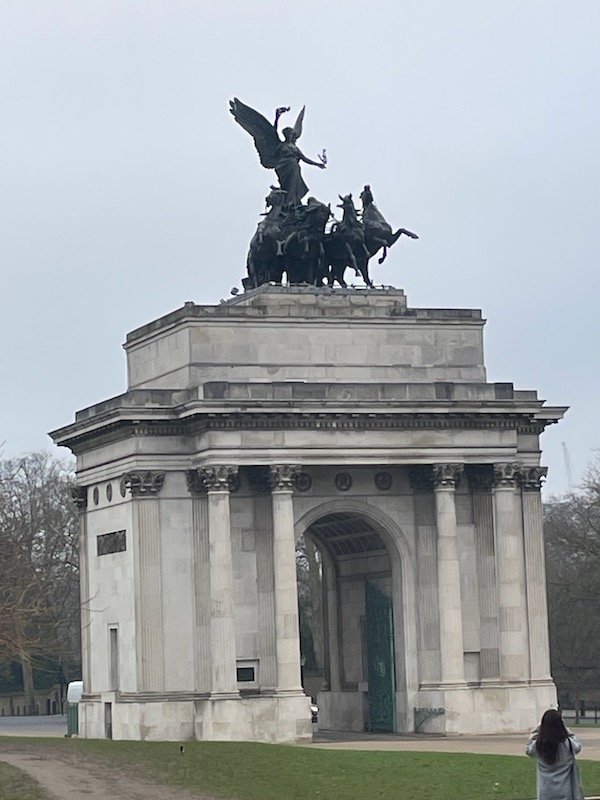
Across from the arch is the grand entrance gate to Hyde Park, dating back to the 1820's. It is sometimes called Apsley Gate because it connects to the tall building that you can get a tiny peek at on the right-hand side, which is Apsley House, a Georgian building that was originally built in 1771 and bought by the 1st Duke of Wellington in 1807. Today it houses a museum to the life and legacy of the Duke of Wellington.
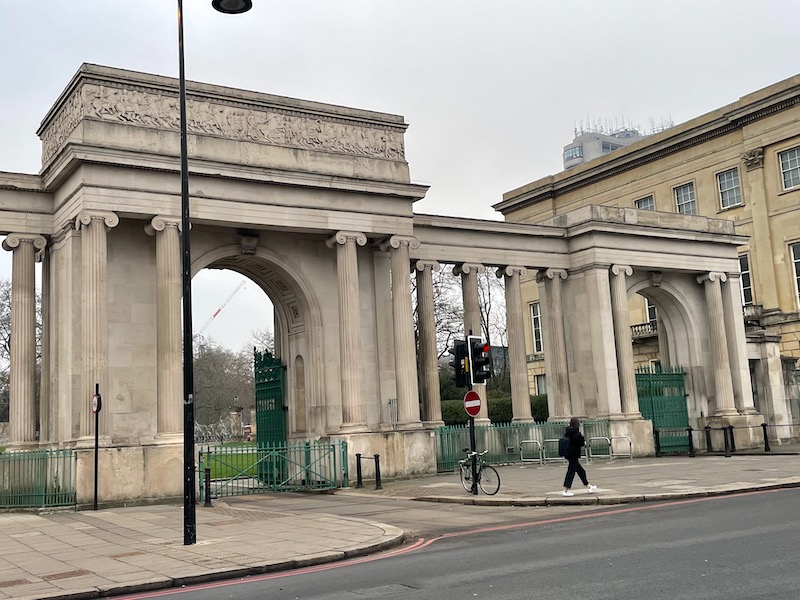
Another gate, this one called the Queen Elizabeth Gate, is a stainless steel and bronze gate with a center piece featuring a red lion (representing England) and a white unicorn (representing Scotland).
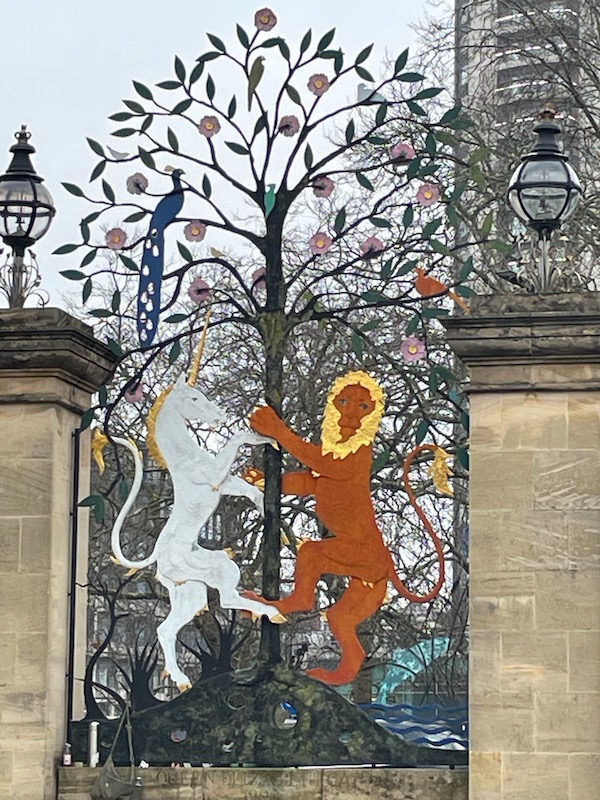
The park itself has lots of statues and memorials, but I only took pictures of a few. The first is a muscular bronze statue of Achilles, erected in 1822 to honor the Duke of Wellington's victories in the Napoleonic Wars. Next is the Calvary of the Empire Memorial, which commemorates the service of cavalry regiments in the First and Second World Wars. It features Saint George, depicted as a mounted knight in armor with sword raised aloft, with his horse standing over the coils of a slain dragon (with upturned Germanic mustache).
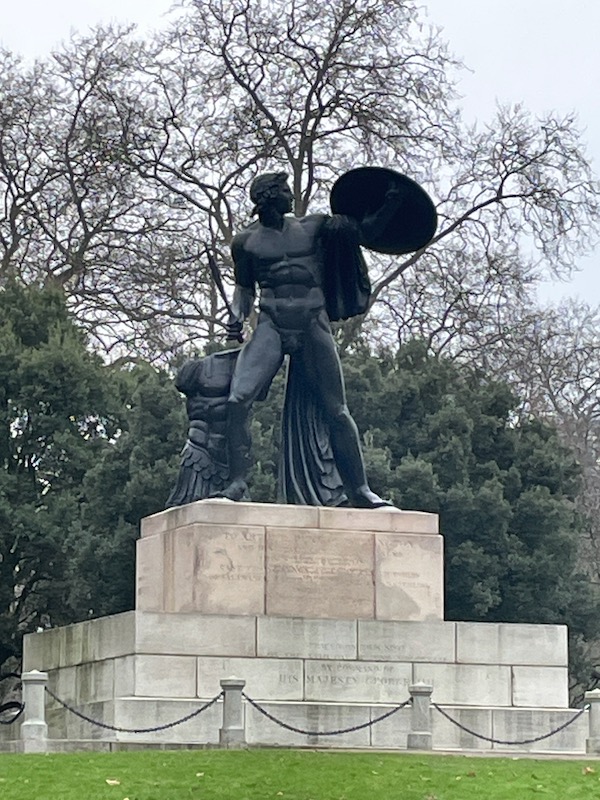
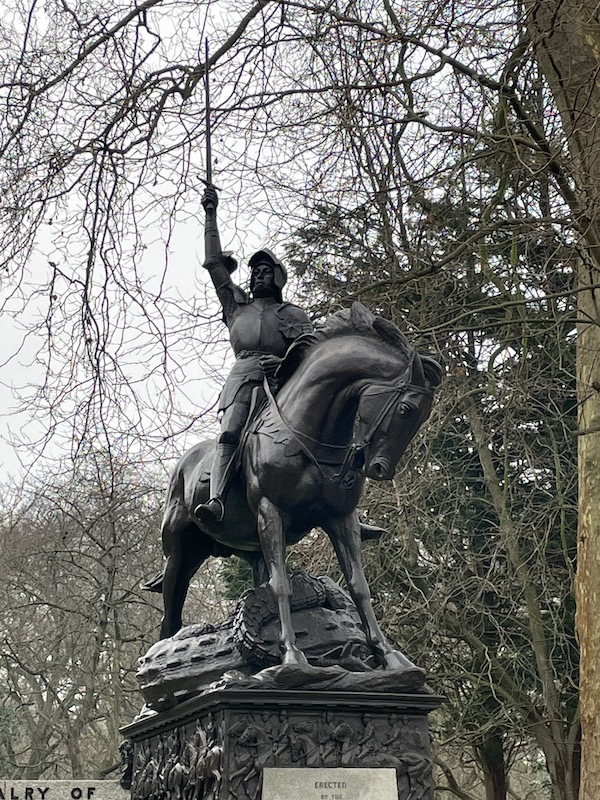
Similar to Central Park in NYC, Hyde Park has a large lake in the middle. This one, called The Serpentine, is a 40-acre recreational lake created in 1730 at the request of Queen Caroline, wife of King George II.
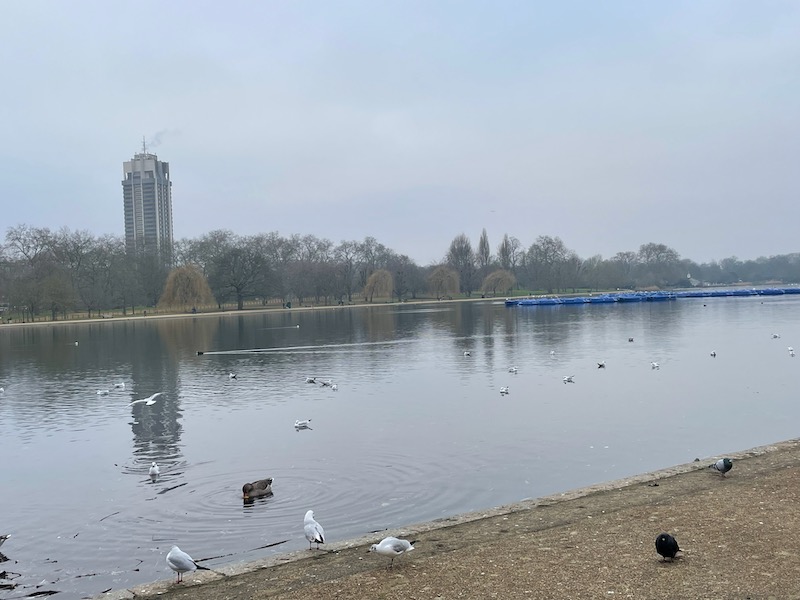
The statue of Peter Pan is a 1912 bronze sculpture group that shows a tree stump topped by a young boy blowing a thin musical instrument like a trumpet or flute, sometimes interpreted as pan pipes. The sides of the stump are decorated with small figures of squirrels, rabbits, mice, and fairies. Several reproductions were made by the artist, one of which stands on the grounds of Rutgers University in New Jersey.
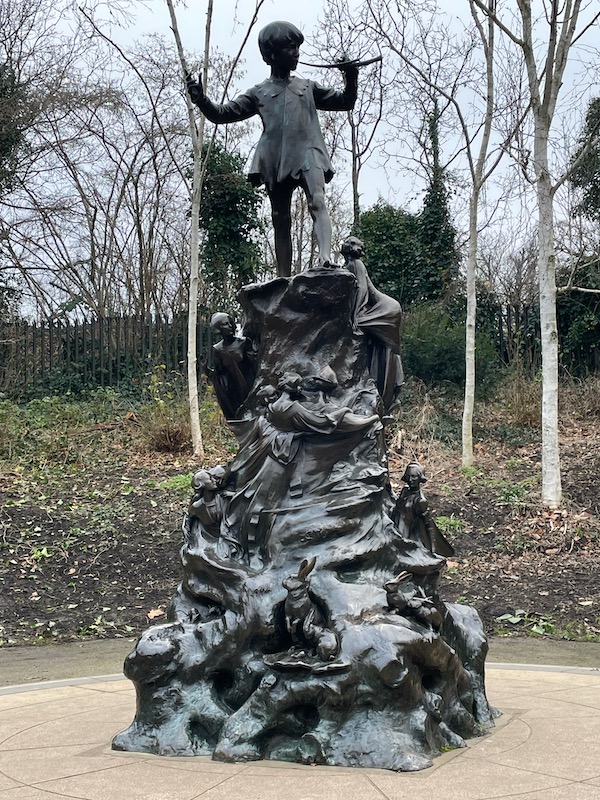
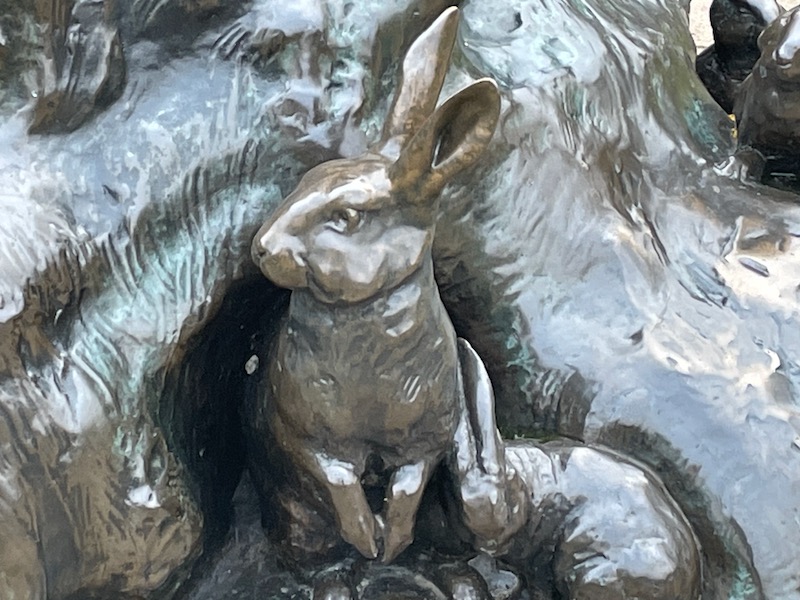
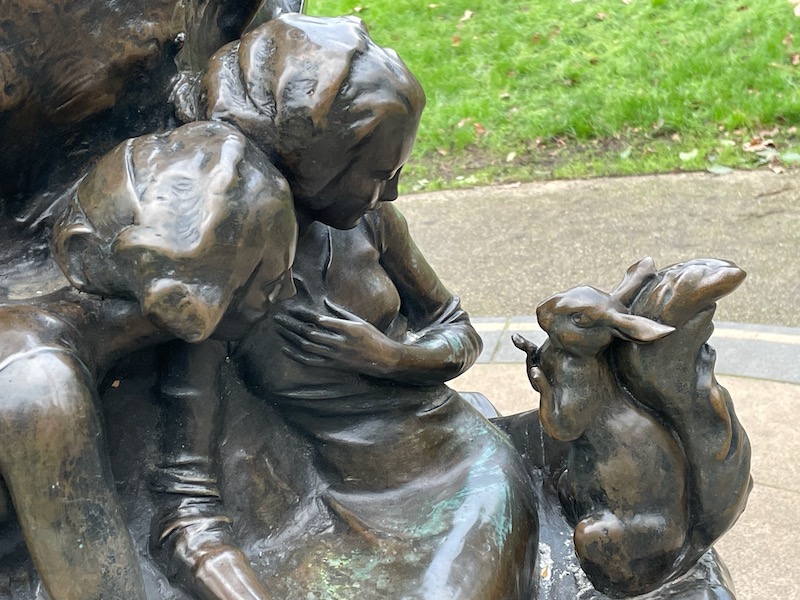
We then took a walking tour (by London Walks) of the Holland Park and Notting Hill neighborhoods. While Notting Hill was made famous in the movie, there is a lot to the neighborhood other than the travel book shop. As we headed off, we went by C. Lidgate, a butcher shop that was founded in 1850 and remains in the family to this day, currently run by the 5th generation of the Lidgate family. The guide mentioned that it was famous for providing meat to the royal family as well as to the wealthy aristocratic families that lived nearby. In 2012, the store appeared twice on the British TV show "Gordon Ramsay's Ultimate Cookery Course".
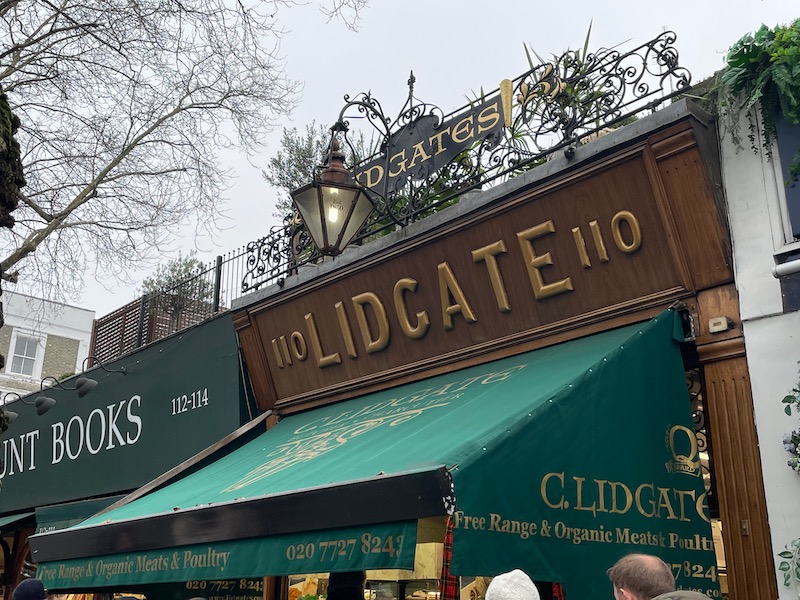
In the distance, you can see the green hearts on the top of a building ... this is what remains of the Grenfell Tower, a residential building where a fire broke out in 2017 and burned for 60 hours, killing 72 people. It was the deadliest structural fire in the United Kingdom since the 1988 and the worst UK residential fire since the Blitz of World War II. I'm not sure how much people heard about it in the US, but it was a major story due to one newly renovated exterior cladding, which ended up failing fire safety tests that were conducted after the fire. Fire safety experts have said that the new external cladding was a possible cause of the rapid spread of the fire, with the gap between the cladding and the insulation working like a chimney to spread the fire. The cladding itself could be seen burning and melting, causing additional speculation that it was not made of fire-resistant material.
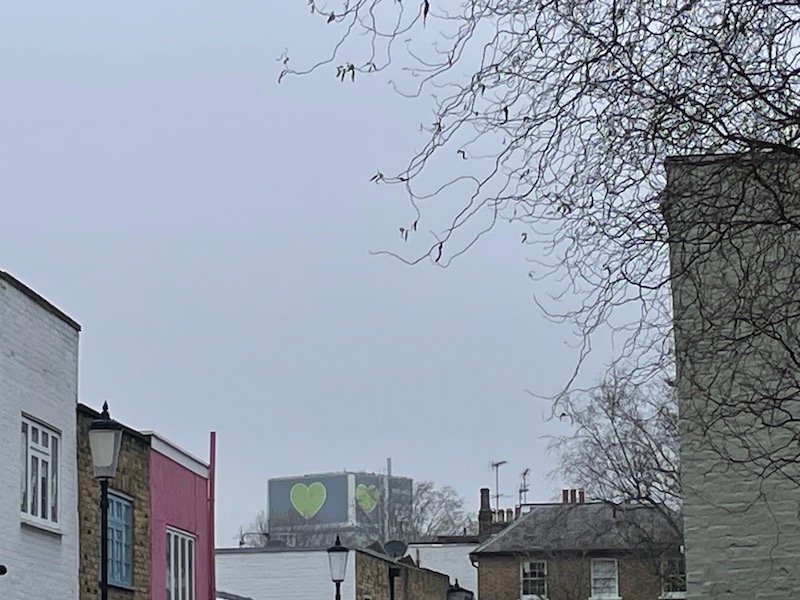
This beehive kiln (named based on the shape) is on Pottery Lane and is the last original brick kiln still standing. Today, it sits in one of London's most fashionable and expensive neighborhoods, but in the mid-19th century, this area was a wretched and notorious slum known as the "Potteries and the Piggeries". It is hard to imagine how horrible this area would have been then ... the smell of pig sty's everywhere and the smoke coming out of the many brick kilns ... ugh.
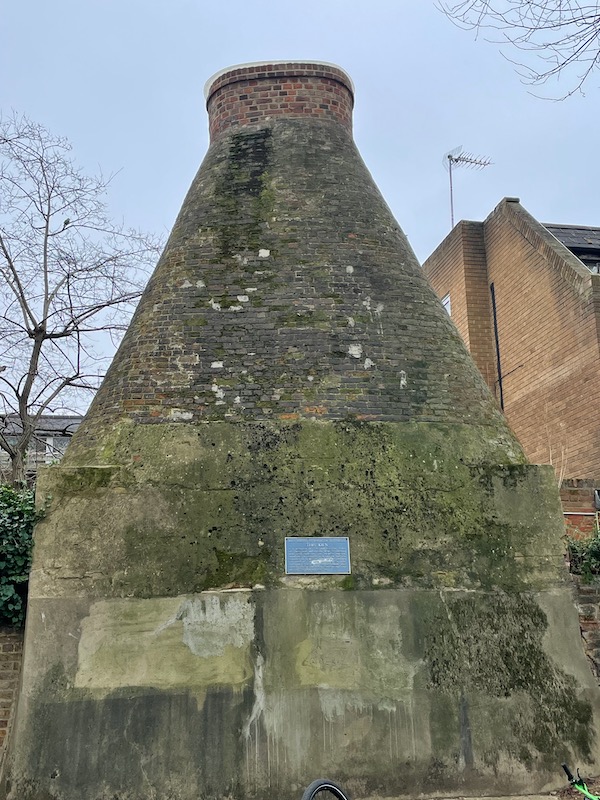
This used to be the Samarkand Hotel, where Jimi Hendrix spent his last days before his death in 1970 of an accidental overdose ... well ... the report says that he aspirated his own vomit and died of asphyxia while intoxicated with barbiturates. One of his girlfriends at the time, German figure skater and painter Monika Dannemann, said that he took 9 sleeping pills that were prescribed for her, 18 times the recommended dosage.
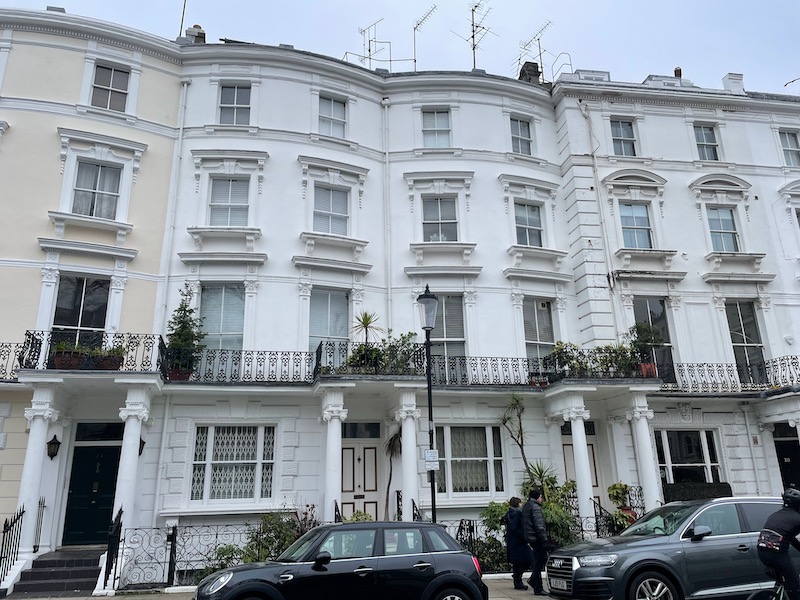
I thought this was a nice view ... looking down a row of townhouses on a street called Stanley Gardens, with the yellow St Peter's Church at the end. St Peter's is a Victorian church designed in a classical style and built in 1857. While the tower isn't specifically classical, the triangular pediment and Corinthian columns definitely are.
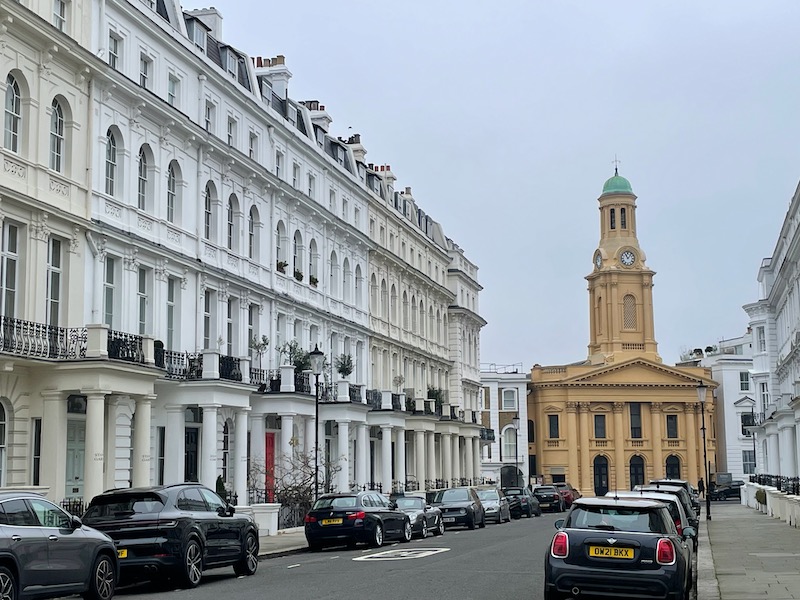
And now we get to what everybody knows about ... the Notting Hill Bookshop. There are actually 2 of them ... the Notting Hill Bookshop (1st picture) is the location of the original "Travel Bookshop" that was the inspiration for the movie. But this location wasn't used in the filming. The 2nd picture shows the store in the Portobello Market that was used in the movie ... today a horrible souvenir shop that was an antique store before the film.
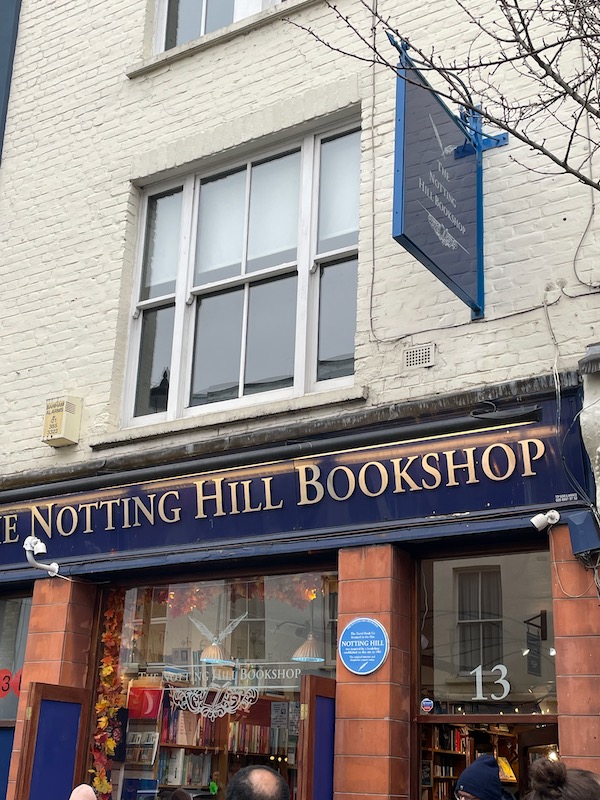
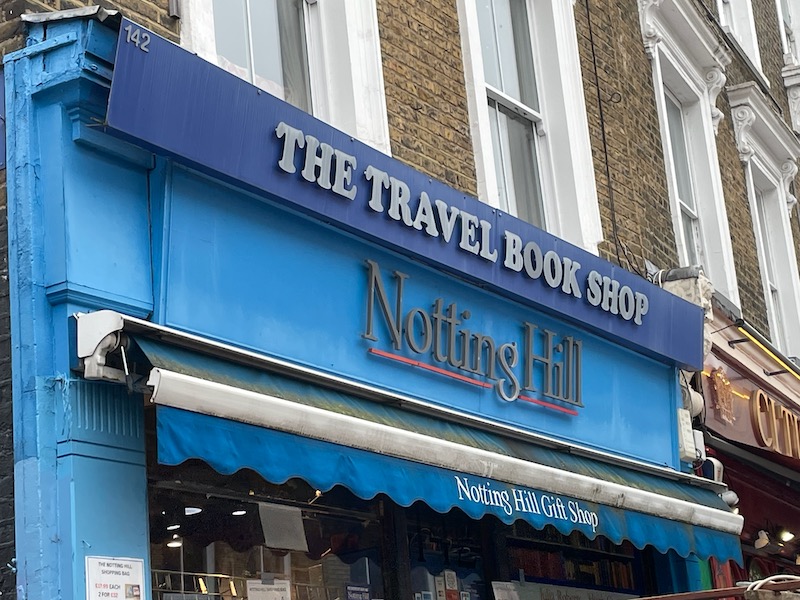
Another matinee musical, this time at the Lyric Theater. It is the oldest surviving theater on Shaftsbury Avenue and dates from 1888. The musical is based on the 2021 book by Anaïs Mitchell and the story follows two intertwining love stories: that of young dreamers Orpheus and Eurydice, and of immortal King Hades and Lady Persephone.
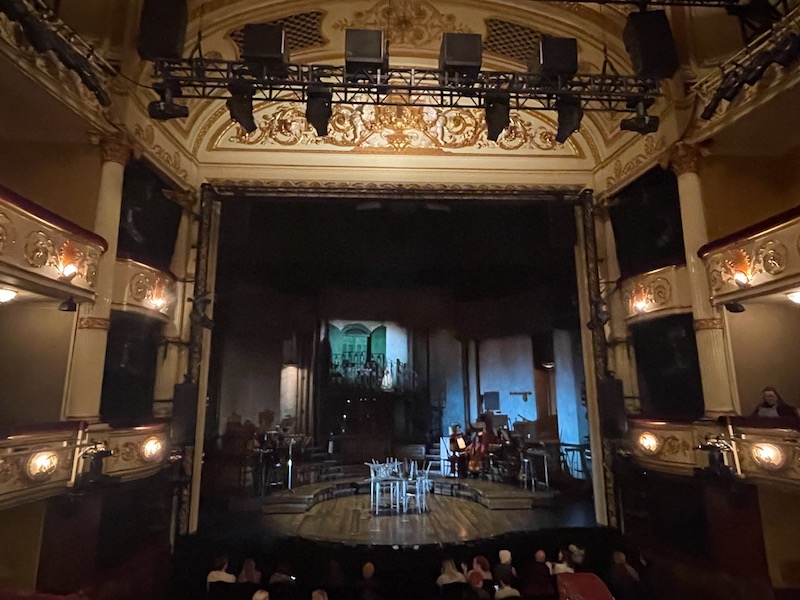
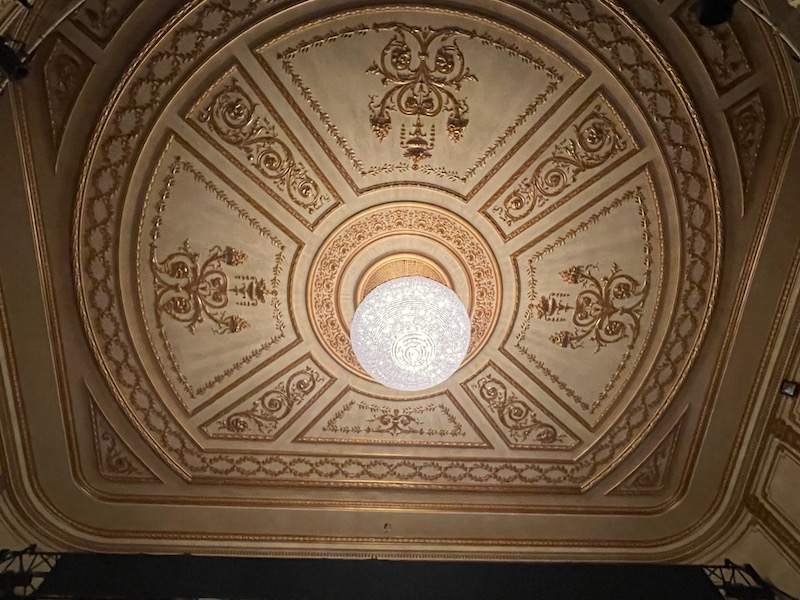
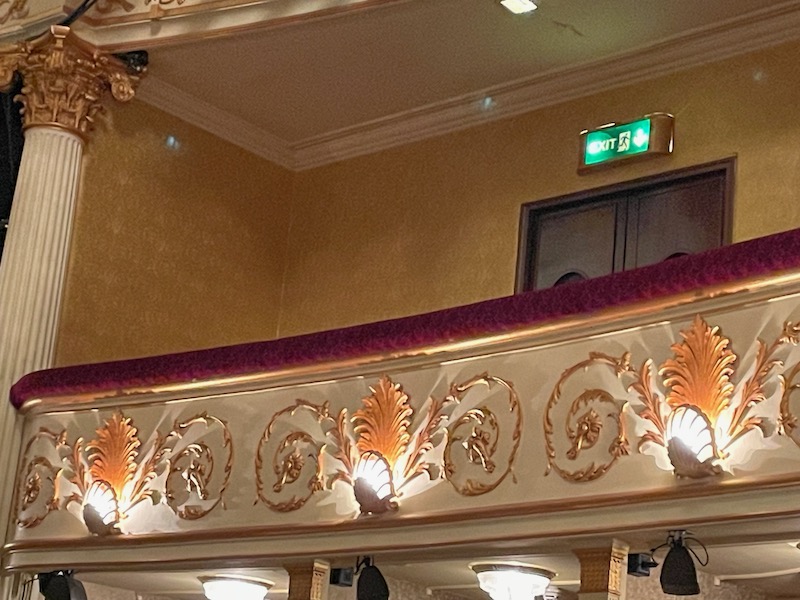
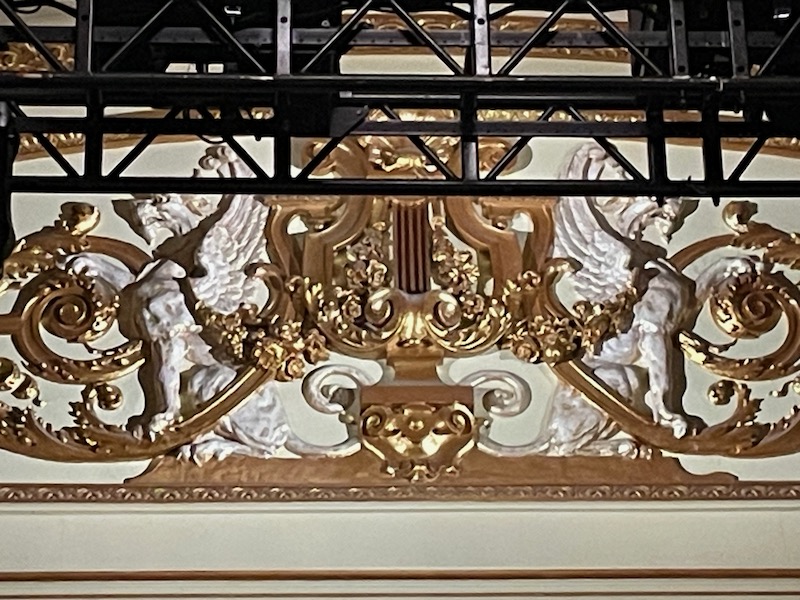
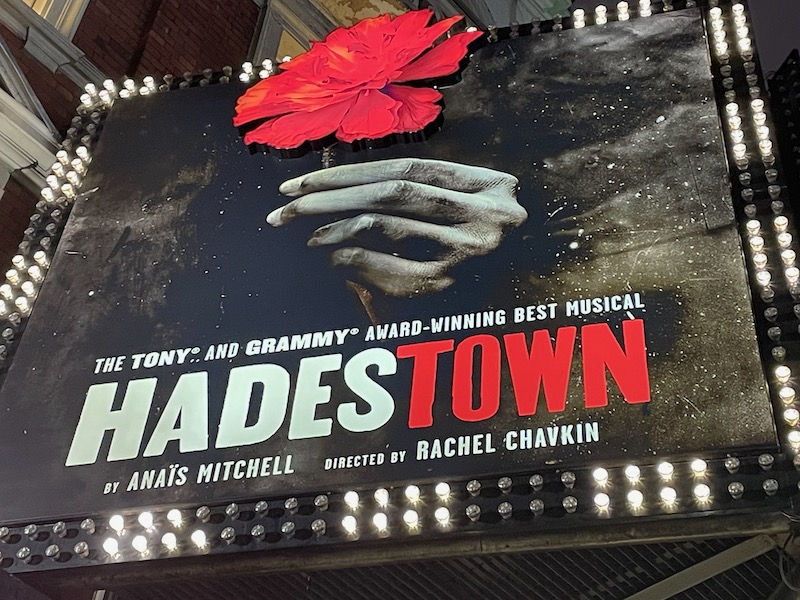
Now ... I haven't been done "food" pictures this trip, until now. This restaurant was a bit of a unique experience ... seating for just 12 people at a counter located in the former beer cellar of The Blue Posts pub. The head chef, Seamus Sam, has headed several Michelin-starred restaurants. Here you can see the long counter and the kitchen right behind it ... it is a very small place!
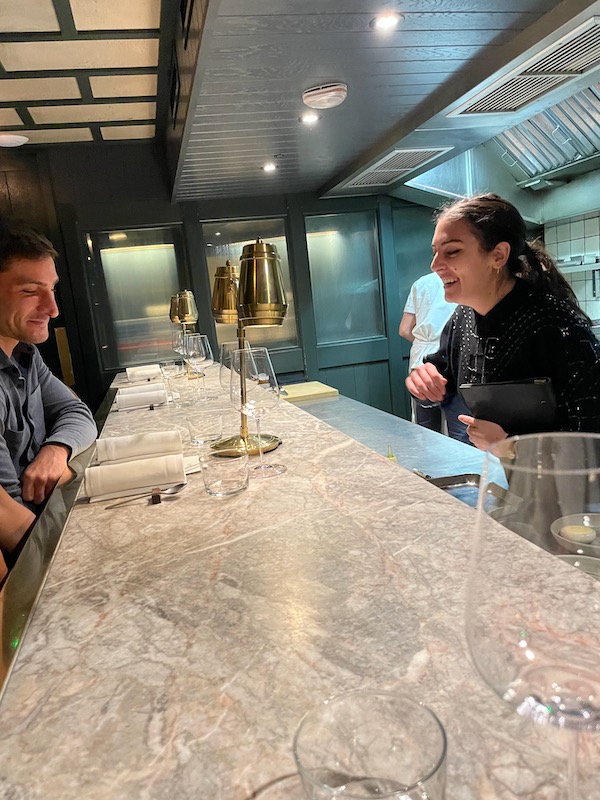
It was a chefs-choice menu although they did ask ahead-of-time if we had any food allergies. As you would expect, it was a series of small courses ... sliced scallops that had been roasted over coals, then pollock (a white fish) with leeks and a mussel, and a some "puffed potatoes" (pomme soufflé). If you are interested in making these little potato gems, there is a nice YouTube video that has a semi-painless way to do it.
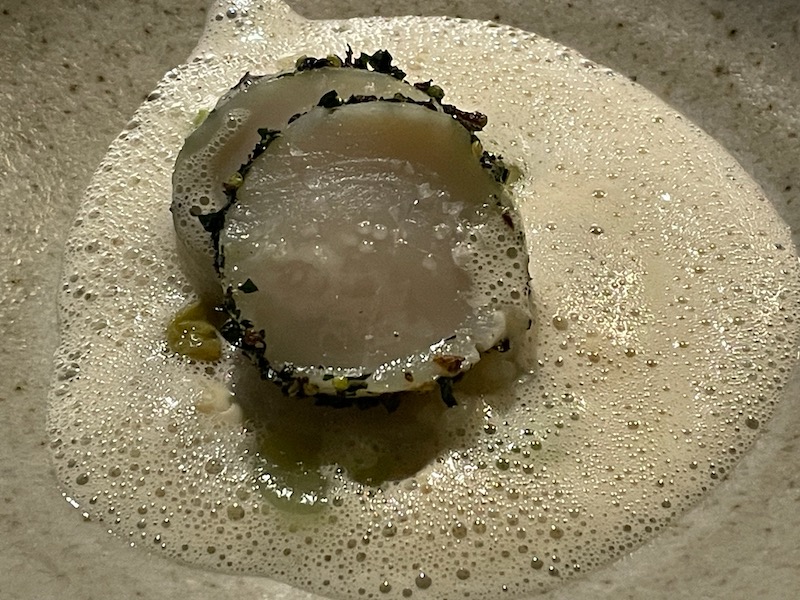
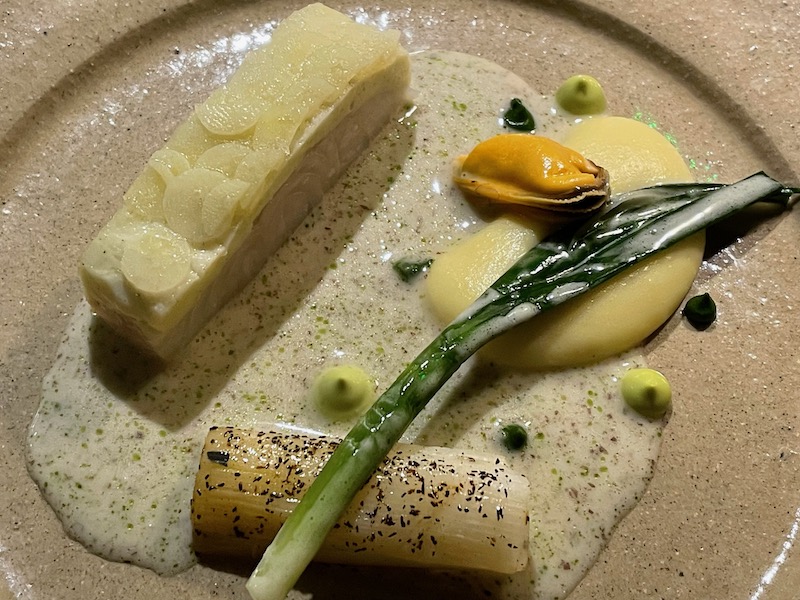
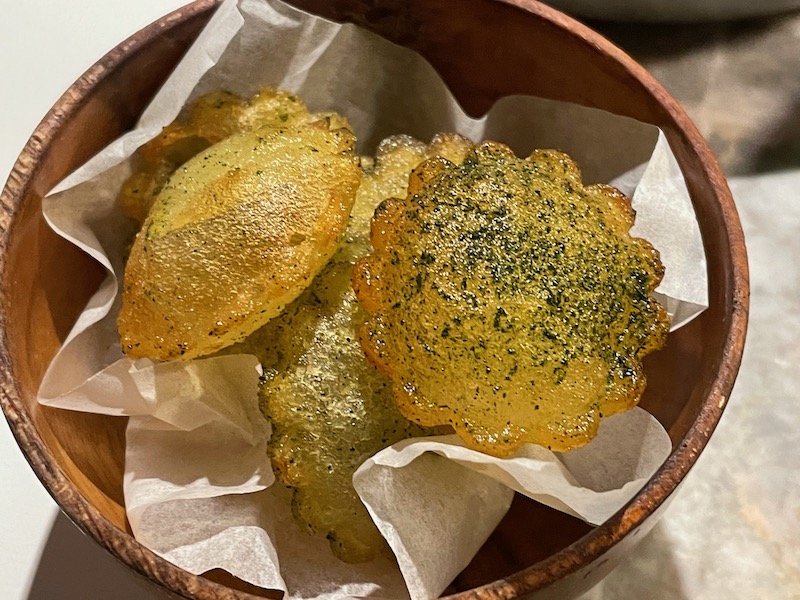
Next up was a little roll of boneless guinea fowl sitting on a cèpe mushroom sauce ... Susan added the shaved black truffle supplement!
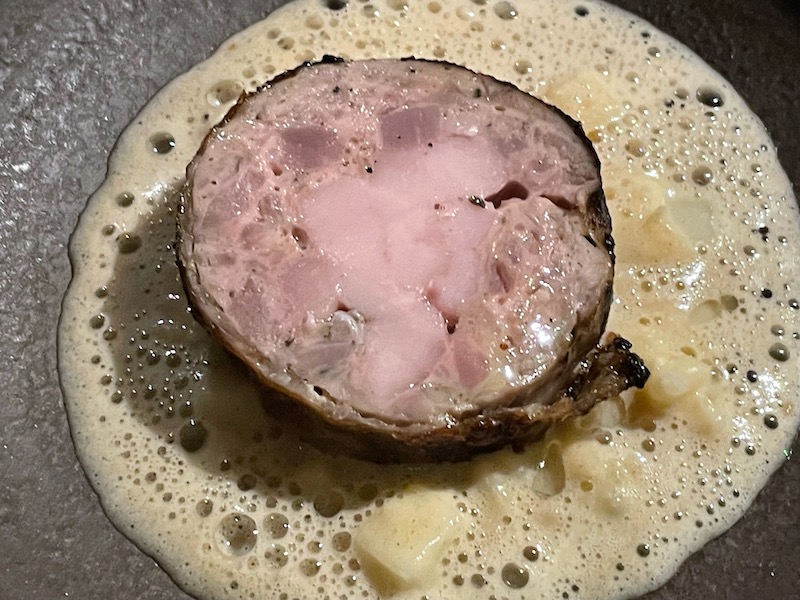

Then we had a take on Peking Duck, complete with little pancakes and spring onions. The duck had previously been cooked in a large piece and then the chef did some additional cutting and preparing as she served it. I tried to get a little bit of a video showing what she was doing, and then the final plate.
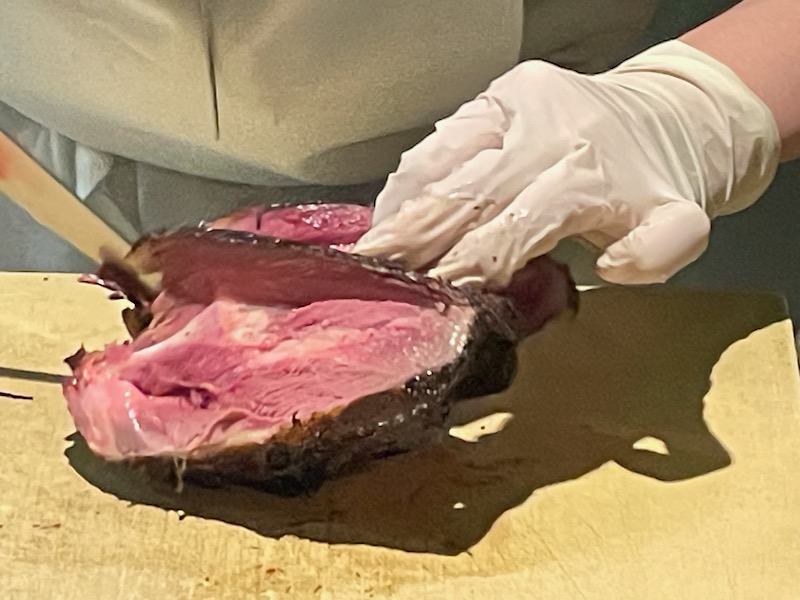
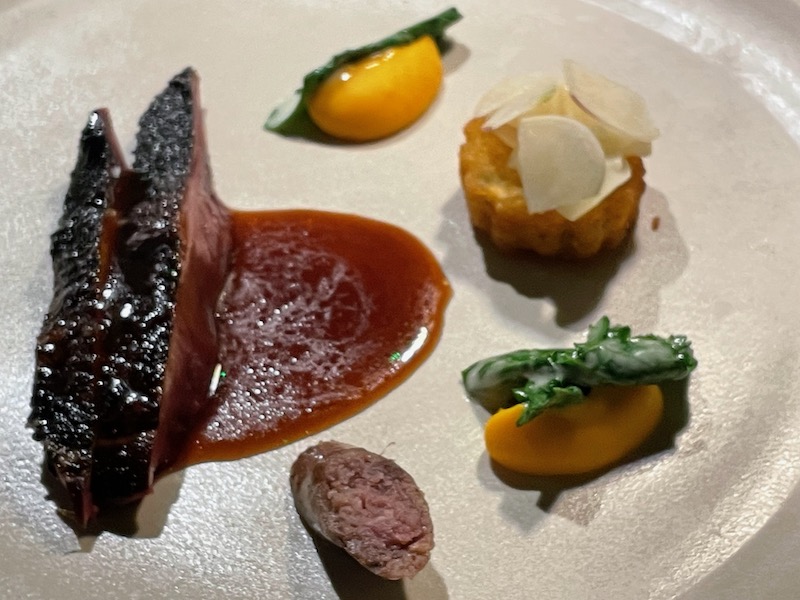
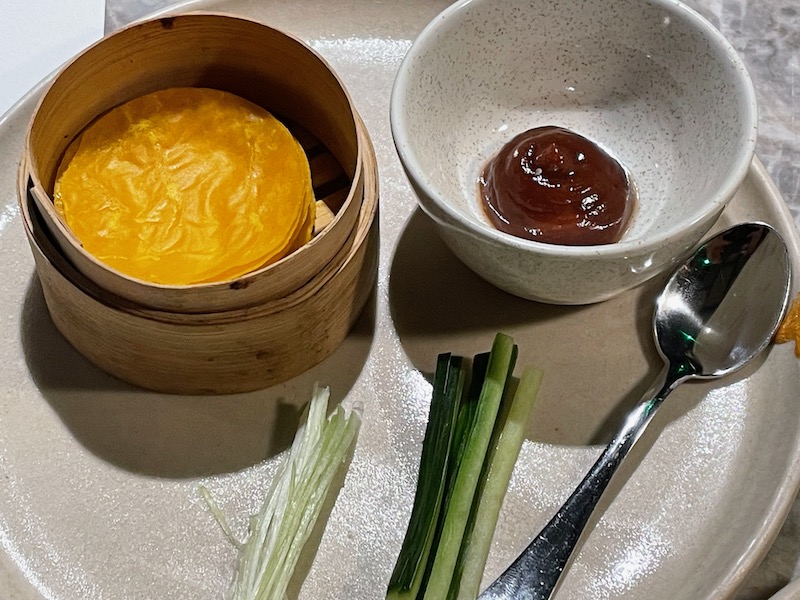
Then a little bit of a palate cleanser of a granita with blackberry jellies, and the dessert with pear, hazelnuts, miso, and Earl Grey.
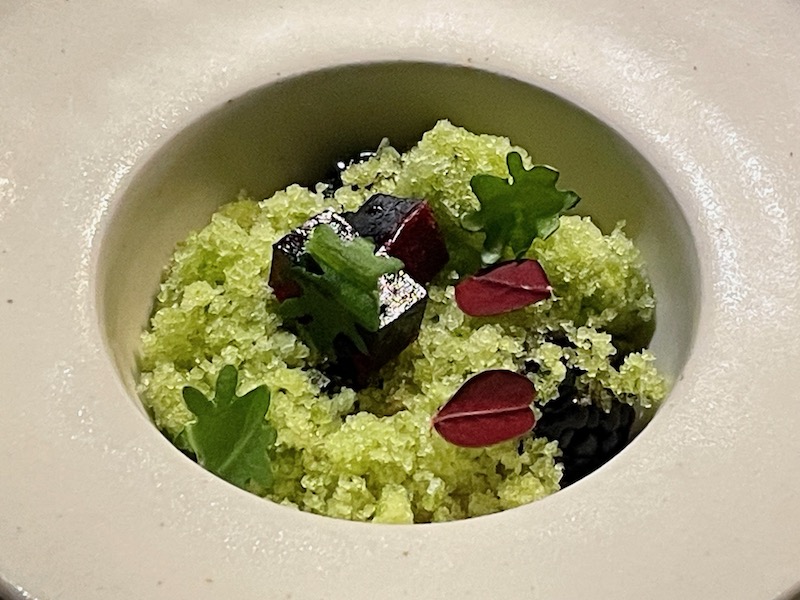
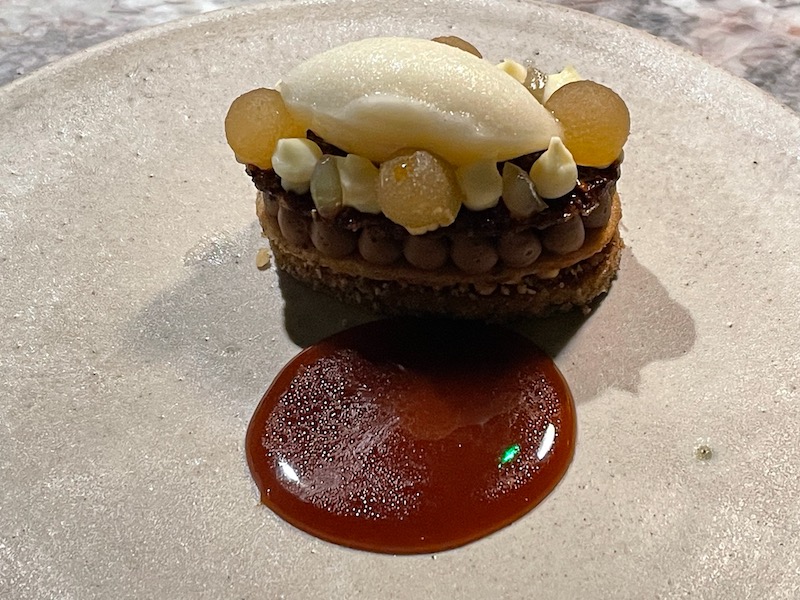
We really enjoyed all of the plates, and having it being such an intimate location make it even more special. You get to talk to the chefs (including the head chef) as they plate up each dish and can see it right in front of you, not like other Michelin-starred places where the dishes magically appear from some hidden kitchen.